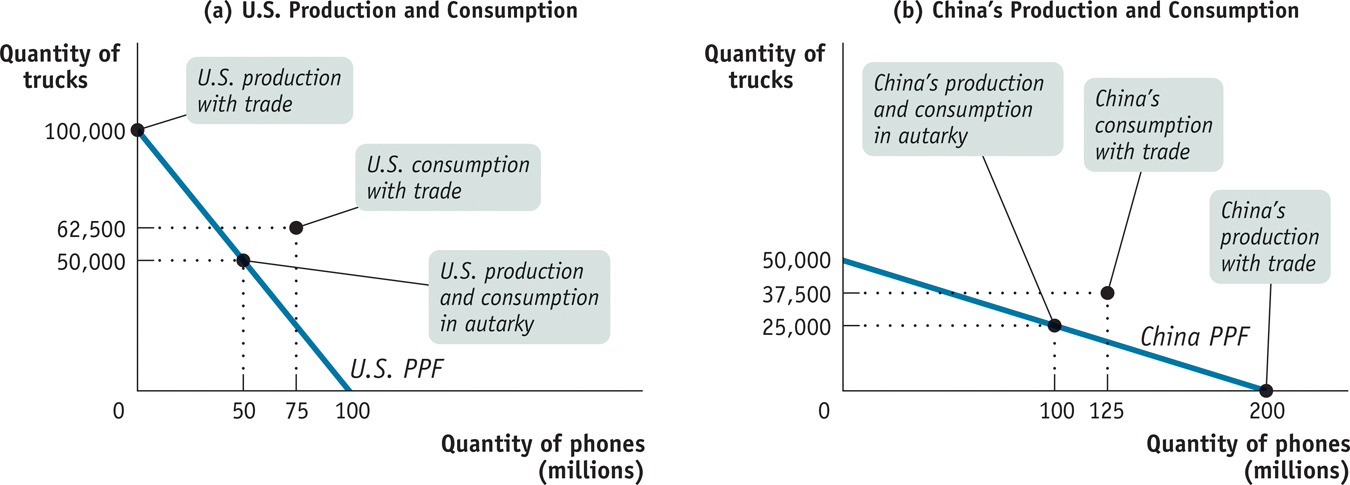The Gains from International Trade
Figure 5-3 illustrates how both countries can gain from specialization and trade, by showing a hypothetical rearrangement of production and consumption that allows each country to consume more of both goods. Again, panel (a) represents the United States and panel (b) represents China. In each panel we indicate again the autarky production and consumption assumed in Figure 5-2.

Once trade becomes possible, however, everything changes. With trade, each country can move to producing only the good in which it has a comparative advantage—
Table 5-2 sums up the changes as a result of trade and shows why both countries can gain. The left part of the table shows the autarky situation, before trade, in which each country must produce the goods it consumes. The right part of the table shows what happens as a result of trade. After trade, the United States specializes in the production of trucks, producing 100,000 trucks and no phones; China specializes in the production of phones, producing 200 million phones and no trucks.

The result is a rise in total world production of both goods. As you can see in the Table 5-2 column at far right showing consumption with trade, the United States is able to consume both more trucks and more phones than before, even though it no longer produces phones, because it can import phones from China. China can also consume more of both goods, even though it no longer produces trucks, because it can import trucks from the United States.
The key to this mutual gain is the fact that trade liberates both countries from self-
In this example we have simply assumed the post-
One requirement that the relative price must satisfy is that no country pays a relative price greater than its opportunity cost of obtaining the good in autarky. That is, the United States won’t pay more than 1,000 trucks for one million phones from China, and China won’t pay more than 4,000 phones for each truck from the United States. Once this requirement is satisfied, the actual relative price in international trade is determined by supply and demand—